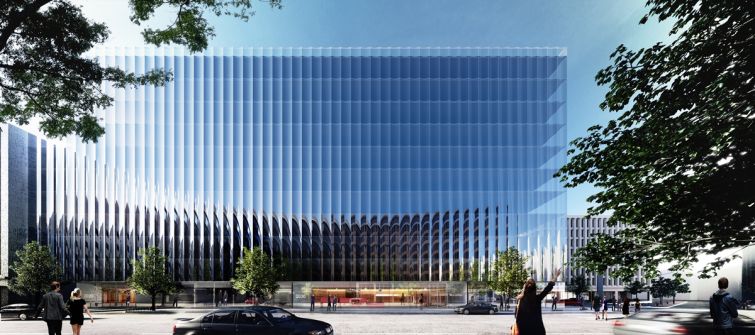Law Firms Shrinking Footprints, Increasing Vacancies in DC: Report
By Christina sturdivant-Sani December 6, 2018 4:13 pm
reprints
As D.C.’s largest private-sector office user, law firms have a combined footprint of 16 million square feet, or 15 percent, of total leased space in the city, according to a new CBRE report that looks at current trends among large and small law firms in the city. The report defines large firms as those with leases greater than 35,000 square feet and smaller leases as those than take up less space.
Many large law firms are choosing relocation over lease renewal because it provides “the best opportunity to both rebrand and right-size,” according to Lou Christopher, a vice chairman of CBRE. As they make these transitions, they’re able shrink their footprint by an average of 20 percent, he said.
Although hiring at law firms in D.C. has remained largely stable over the past few years, the report found that firms are using new workplace strategies to reduce their footprints. About five to 10 years ago, law offices allotted an average of 900 to 1,100 square feet per attorney, plus five meeting rooms with about 30 seats compared with today’s average of 550 to 750 square feet of space per attorney and nine meeting rooms with about 65 seats.
This is a trend that has been in play for a number of years. Commercial Observer reported in 2015 that law firms were reducing footprints and boosting efficiency in order to cut pricey real estate costs, especially in New York City.
While increasing space utilization, smarter approaches to office design promote collaborative work environments, improve talent acquisition, enhance branding and offer amenities spaces for wellness and social activities, per the report.
The impact of these reductions has shown up in the increasing rate of vacancies at Class-A office buildings, which has climbed to 12.1 percent—the highest level in D.C. since 2009.
Despite shrinking spaecs, law firms are still prioritizing high standards. According to the report, law firms dominate premium locations, occupying 52 percent of all leased trophy assets in the city. Since 2017, six law firms have pre-leased a total of 854,000 square feet of top-floor office space in new developments, leaving behind 1.2 million square feet of “second-generation space in older, less efficient buildings.”
Another source of law firm contraction in D.C. is due to consolidations, according to the report, which points to three mergers in 2018 that resulted in a total addition of 121,494 square feet of sublease space to the market. Chadbourne & Parke consolidated into Norton Rose Fulbright’s space at 799 9th Street NW; Andrews Kurth Kenyon joined Hunton & Williams’ space at 2200 Pennsylvania Avenue NW; and Fitzpatrick, Cella, Harper & Scinto moved into Venable’s building at 600 Massachusetts Avenue NW.
As law firms and GSA tenants (as CO previously reported) are expected to reduce more space and new inventory hits the market, CBRE predicted D.C.’s vacancy rates will rise above 15 percent by the end of 2019.
But there’s also a tale of two cities happening among D.C. law firms. Since 2017, 13 of the 17 large law firms with leases greater than 35,000 square feet shed a total of 454,295 square feet while 28 out of 43 smaller law firms with leases less than 35,000 square feet contributed to an occupancy growth of 226,279 square feet. Still, that means there has been more space added to the market than snapped up.
Looking forward, the report predicts that development activity may slow in 2020 if developers aren’t able to hook a substantial amount (40 percent) of pre-leases as vacancy rates continue to climb. Rising construction costs, interest-rate hikes “and concern over an imminent market correction due to the prolonged economic cycle,” may also hamper new development.


